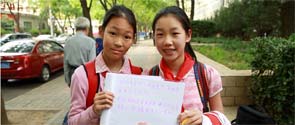Editor's Note: Keywords to Understand China: the Belt and Road Initiative is a selection of "China Keywords" entries included in an eponymous multilingual platform to help readers better understand China's B&R Initiative. It is one of the major projects implemented by the China International Publishing Group and the China Academy of Translation.
Silk Road to green development
Environmental protection is a common concern of humanity. Addressing the Legislative Chamber of the Uzbek Supreme Assembly on June 22, 2016, President Xi Jinping emphasized the need to strengthen cooperation in environmental and ecological protection, so as to build a Silk Road to green development.
This idea had previously been affirmed by the Chinese government in a white paper entitled Joining Hands to Build a Silk Road Economic Belt and a 21st-Century Maritime Silk Road – Vision and Actions.
The document highlights the importance of a green, low-carbon approach to building and operating infrastructure, taking into full account the imperative to mitigate the impact of climate change.
It encourages joint efforts to build a Silk Road to green development by integrating ecological considerations into trade and investment strategies, and expanding cooperation in protecting the environment and biodiversity and addressing climate change.
Contributing to the goal of sustainable development, and informed by the concept of environmentally friendly development, the Silk Road to green development initiative calls for a careful balance between economic growth and environmental protection, with due consideration given to the ecological carrying capacity of the countries concerned.
Ecological protection, prevention and control of desertification, and clean energy, among others, already feature prominently in strategic planning exercises for implementing the Belt and Road Initiative. The prospects for a Silk Road to green development look bright.
Silk Road for health cooperation
Promoting health at a global level is an important component of the 2030 Agenda for Sustainable Development.
In his speech to the Legislative Chamber of the Uzbek Supreme Assembly on June 22, 2016, President Xi Jinping proposed expanding cooperation in health under the framework of the Belt and Road Initiative, that is, jointly building a Silk Road for health cooperation, by strengthening information sharing on a range of measures including communicable diseases, disease prevention and control, medical relief and assistance, and exchanges on traditional medical research.
On January 18, 2017, the Chinese government and the World Health Organization signed a memorandum of understanding to this end.
A Silk Road for health cooperation aims to improve public health in countries along the Belt and Road. Key measures include increased consultation and exchanges on health policy issues, building institutions, defining international health standards and norms, enhanced cooperation in disease prevention and control, and training and capacity building.
Efforts will also be stepped up to facilitate global access to high-quality and affordable China-made pharmaceutical products beneficial to people around the world.
Silk Road to innovation
Talent management is key to effectively implementing the Belt and Road Initiative.
At the Silk Road Forum in Warsaw on June 20, 2016, President Xi Jinping emphasized the unique role talent development can play in leading the way in this regard. It is important, he pointed out, to promote research on courses of action and means to achieve the goals of the initiative, so as to inform decision-making with regard to strategic planning and alignment, policy coordination, and the design of mechanisms.
Also crucial is effective dissemination of information about the guiding principles of the initiative and interpretation of policies so as to better respond to the people.
Addressing the Legislative Chamber of the Uzbek Supreme Assembly on June 22, 2016, Xi proposed the establishment of a technical cooperation alliance under the Belt and Road Initiative to facilitate training and capacity building.
The objective of a Silk Road to innovation is to enhance talent development and exchange of expertise in response to any shortfall of skilled personnel in countries along the proposed Belt and Road.
Any new progress in implementing the initiative will, to be sure, be accompanied by new challenges. Overcoming these challenges requires brainpower and expertise. It is therefore vital for countries to learn from each other and join hands in finding solutions.
Silk Road to peace
Serious terrorist, secessionist and extremist threats lurk along the Belt and Road, especially along the Belt. There is also tension between some of the countries along the routes, giving rise to occasional localized conflicts.
Furthermore, a number of countries are subject to internal instability. For the Belt and Road plan to proceed, it is crucial to defuse turmoil and maintain peace and stability at the regional level.
In his speech to the Legislative Chamber of the Uzbek Supreme Assembly on June 22, 2016, President Xi Jinping called for enhanced security cooperation. It is critical, he said, to promote a new Asian security concept that emphasizes joint and comprehensive measures and cooperation in ensuring sustainable security, and to create a security governance framework with Asian characteristics – in sum, to jointly build a Silk Road to peace.
A Silk Road to peace rests on two mutually complementary pillars: an environment of relative stability, which is indispensable for the Belt and Road Initiative to thrive; and concerted efforts to build the trade network, which contributes to regional peace and stability.
China believes that development promotes peace and security, a conviction that has been borne out by experience.
(The opinions expressed here do not necessarily reflect the opinions of Panview or CCTV.com)

Panview offers a new window of understanding the world as well as China through the views, opinions, and analysis of experts. We also welcome outside submissions, so feel free to send in your own editorials to "globalopinion@vip.cntv.cn" for consideration.















